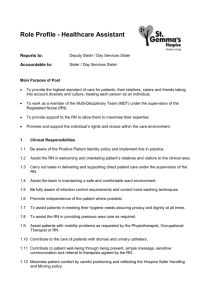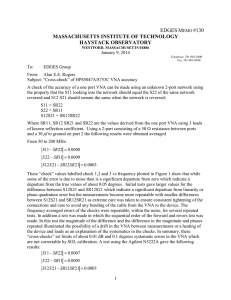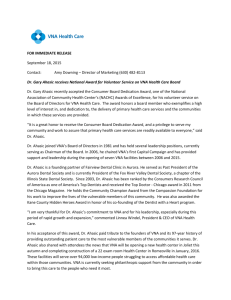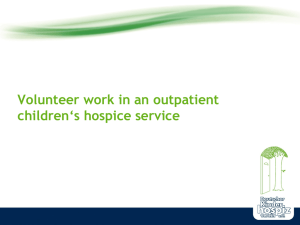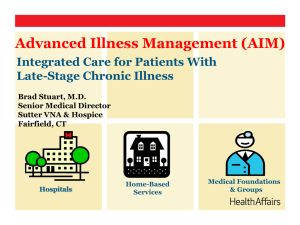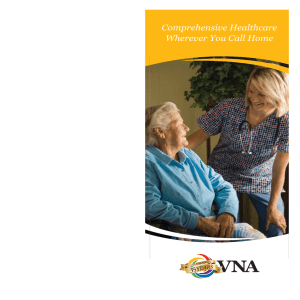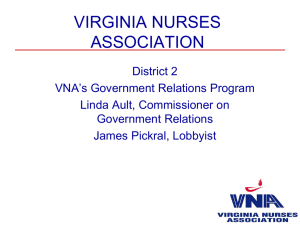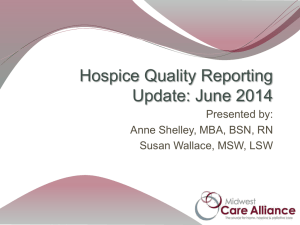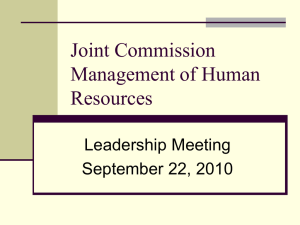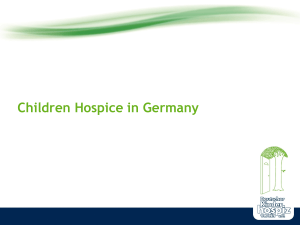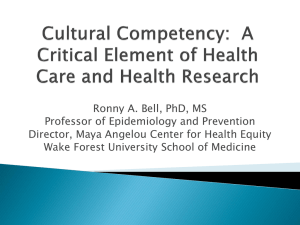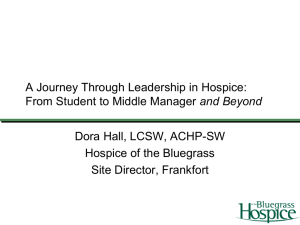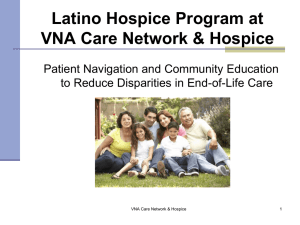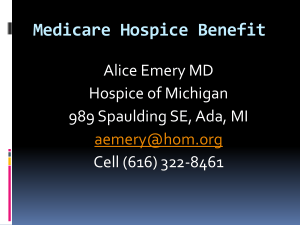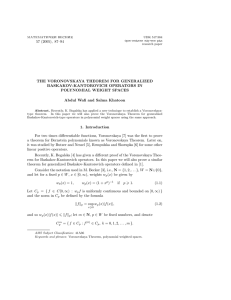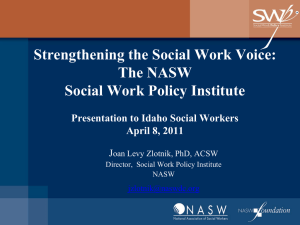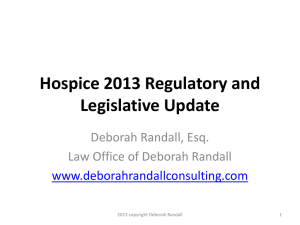Summary October 2010
advertisement
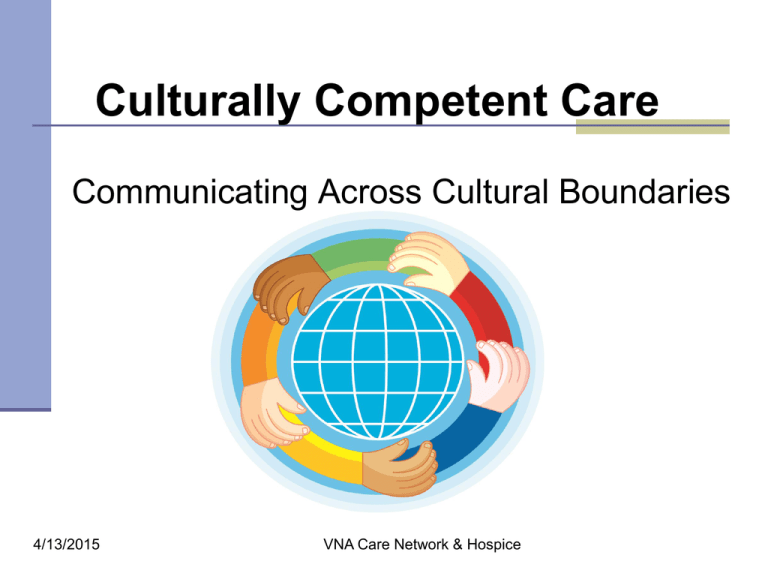
Culturally Competent Care Communicating Across Cultural Boundaries 4/13/2015 VNA Care Network & Hospice Before we begin . . . Culture is deeply personal. Respect difference. Distinguish “generalizing” from “stereotyping.” And now . . . We’re pleased to meet you! Setting the Stage: Who we are & why we’re here Cathy Romeo Cultural Competency Program, VNA Care Network & Hospice Marilyn Gardner, RN Clinical Liaison, Care Coordination Program, MDPH 4/13/2015 VNA Care Network & Hospice Evaluation Summary & Next Steps October 8, 2010 Mount Auburn Hospital Diversity Committee Review of Barriers, Tools, Resources Evaluation summary through pictures Evaluation summary through words Next steps – what may work Barriers that impede cross-cultural interactions . . . . . . why isn’t this easier? Cultural Blindness Cultural Shock Cultural Conflict Cultural Imposition Ethnocentrism Racism & Discrimination 4/13/2015 VNA Care Network & Hospice Breaking Down the Barriers (CLAS, US/HHS, IOM, MetroWest Foundation & Harvard School of Public Health Report, etc.) 4/13/2015 Promote cultural self-awareness Train providers in cultural competency Improve cross-cultural communication Recruit diverse staff Identify client/community needs or gaps Listen to voices from the community ASK! VNA Care Network & Hospice To build communication bridges, ASK! Don’t assume . . . “ASK!” Acknowledge what we don’t know. Seek the knowledge we need. Know the comfort of culture for everyone! (Consult resources on cross-cultural communication & interviewing techniques.) Practical and Attainable Steps and Resources for Cultural Competency Celebrate, value and share culture. Survey staff, identify key cultural informants. Listen to ‘Community Voices’ (Diversity Council); plan WITH, not for, the community. Learn about cultural health practices. Seek to understand both the rationale and the meaning behind the practices. 4/13/2015 ASK! Don’t assume. Identify cultural needs, such as visual and translated pain scale. Cultural profiles, books and Internet sites. VNA Care Network & Hospice Possible Next Steps Beliefs & Barriers Panel (longer time needed) 3 person panel General and disease specific questions Generous time allotment for discussion Organizational & Self Assessments Conducting a Cultural Competence Self-Assessment Andrulis, Dennis et al. http://erc.msh.org/provider/andrulis.pdf National Center for Cultural Competence Cultural Competence Health Practitioner Assessment https://www4.georgetown.edu/uis/keybridge/keyform/form.c fm?formID=277 Questions or final thoughts? Other Resources http://www.eperc.mcw.edu Gordon & Bidar-Sielaff. “Cultural Aspects of Pain Management.” Fast Facts, July 2006. End of Life/Palliative Education Resource Center. Cultural Competence in Cancer Care: A Health Professional’s Passport. 2006: Baylor College of Medicine. http://nurseweb.ucsf.edu/public/npress/ord-culture.htm Culture and Clinical Care. Winner of a Book of the Year Award from the American Journal of Nursing. http://www.socialworkers.org/practice/standards/NASWCulturalStandards.pdf http://www.youtube.com/user/TAHITOnline#p/a/u/0/UBLuaoGXOBg PSA, Texas Association of Healthcare Interpreters and Translators. Cathy Romeo, Cultural Competency Program VNA Care Network & Hospice (888) 663-3688, Ext. 4528; cromeo@vnacarenetwork.org Marilyn Gardner, Care Coordination Program MA Department of Public Health (617) 624-5408; marilyn.gardner@state.ma.us
